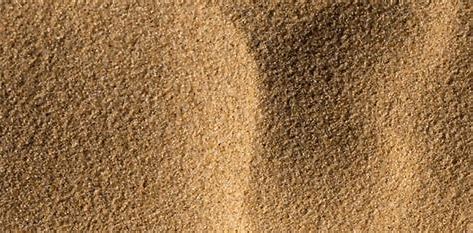TechConsults SK 53
Divider
General
Test for Aggregates for Concrete – Aggregate Soundness Test
(IS:2386 2016 Method of Test for Aggregates for Concrete – Part V Soundness)
The soundness test determines an aggregate’s resistance to disintegration by weathering and freeze-thaw cycles. The most common soundness test involves repeatedly submerging an aggregate sample in a saturated solution of sodium or magnesium sulphate. The disintegration of aggregates is recorded.
Apparatus for Determining Aggregate Soundness Test
Sieves for fine aggregate : 150, 300, 600 micron and 1.18, 2.36, 4.00, 4.75 mm
Sieves for coarse aggregate : 8.00, 10, 12.5, 16, 20, 25, 31.5, 40, 50, 63 & 80 mm
Containers for immersing the samples.

Balance and weight box
Drying oven capable of maintaining a temperature of 1050 – 1100 C
Saturated solution of sodium sulphate is prepared. And it should be maintained to a temperature of 27.0. ± 2.0 and maintained at least 48 hours before use.
Soundness Test Procedure for Fine Aggregates
The sample (representative or by quartering) shall be collected for about 2500 gm. This sample of fine aggregate shall be thoroughly washed on a 300 micron IS sieve, dried to constant weight at 1050C– 1100C and separated into different sizes by sieving as under:
S N0. | Passing IS Sieves | Retained on IS Sieves |
A | 10 mm | 4.75 mm |
B | 4.75 mm | 2.36 mm |
C | 2.36 mm | 1.18 mm |
D | 1.18 mm | 600 microns |
E | 600 microns | 300 microns |
(The above sieves shall be arranged in sieve shaker and the prepared oven dry sample shall be put in shaker for about 12 minutes. The material retained on each sieve shall be weighed and recorded for different fractions A, B, C, D, and E. The quantity of each fractions shall be such so that each fraction has more than 100 gm of aggregates)
Samples of approximately (100 ± 20) gm shall be weighed for each faction and put in the sieve shaker till refusal to yield at least 100 gm of sample.
The 100-gm sample of each fraction are separated and put in containers. These samples shall be immersed in the prepared solution of sodium sulphate not less than 16 (sixteen) hours and not more than 18 hours in such a manner that the solution covers them to a depth of at least 15 mm. The containers shall be covered to reduce evaporation and for safety of sample from the external elements.
After immersion period, the samples shall be removed from the solution and permitted to drain for 15 + 5 min and placed in the drying oven maintaining the temperature between 1050 – 1100 C for not less than 4 hours and not more than 18 hours until constant weights are attained.
After achieving constant weight for each sample, they shall again be immersed in the prepared solution of sodium sulphate / magnesium sulphate to repeat point 3 and 4 above,
The process of alternate immersion and drying shall be repeated for five or more cycles as specified. After the completion of the final cycle, each fraction of sample is taken out of the salt solutioning and is washed with Barium Chloride and then each fraction of the sample shall be dried to constant weight at 1050 – 1100 C and weighed.
The aggregates shall be sieved on which it was retained before the test (Point 1 above). Actual percent loss shall be calculated for each fraction of sieved material. The record shall be kept as follows: (with an example)
Sieve Size, Weighted(Passing and retained as per Para 1) | Grading of Original Sample % | Weight of Test Fractions Before Test, | Percentage Passing Designated Sieve After Test | Percentage Loss |
1 | 2 | 4 | 5 | 6=2×5 |
Minus 150 µm | 6 | |||
300 µm to 150 µm | 11 | |||
600 µm to 300 | 26 | 100 | 4.2 | 1.1 |
1.18 mm to 600 µm | 25 | 100 | 4.8 | 1.2 |
2.36 mm to 1.18 mm | 17 | 100 | 8.0 | 1.4 |
4.75 mm to 2.36 mm | 11 | 100 | 11.2 | 1.2 |
9.5 mm 4.75 mm | 4 | … | 11.2 | 0.4 |
Totals | 100.0 | … … | 5 |
As a general guide, after 10 cycles the average loss of weight should not exceed 12% & 18% when tested with sodium sulphate & magnesium sulphate, respectively.
Soundness Test Procedure for Coarse Aggregates
The sample of coarse aggregate shall be thoroughly washed and dried to constant weight at 1050-1100 C and are to be separated into different sieves by sieving given as under:
Size (square hole sieves) in mm | Yield in gms | Percentage of yield retained |
10-4.75 | 300 | |
20-10consisting of12.5-1020.0-12.5 | 1000 | 3367 |
40-20consisting of25-2040-25 | 1500 | 3367 |
63-40consisting of50-4063-50 | 3000 | 5050 |
80 and larger sizes by 20 spread in sieve size each fraction | 3000 |
The proper weight of sample for each fraction shall be weighed out and placed in separate containers for test.
Each sample as above is immersed dried and again immersed as in case of fine aggregates for desired number of cycles. After final cycle the sample is washed with barium chloride, dried and passed through the sieves as below:
Size of Aggregate(mm) | Sieve used to determine loss(mm) |
63-40 | 31.5 |
40-20 | 16.0 |
20-10 | 8.0 |
10-4.75 | 4.0 |
The percentage loss in weight of each fraction and weighted average loss is calculated as in case of fine aggregates.
As a general guide, after 10 cycles the average loss of weight should not exceed 12% & 18% when tested with sodium sulphate & magnesium sulphate respectively.
Soundness test(Durability) The average loss of mass after 5 cycles not to exceed | 10 percent when tested with Sodium Sulphate:15 percent when tested with magnesium Sulphate | IS: 2386 (Part 5) |
Additional Links



